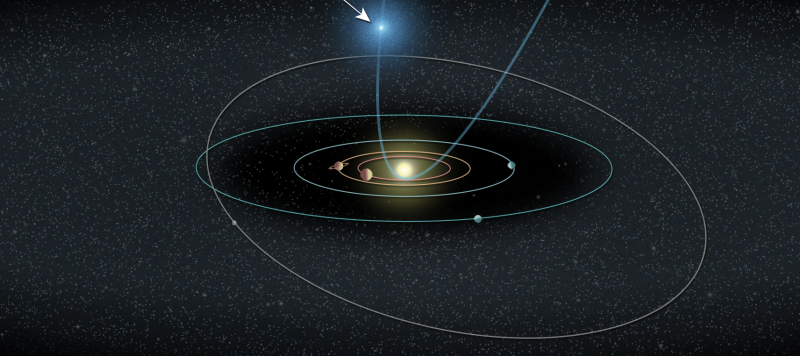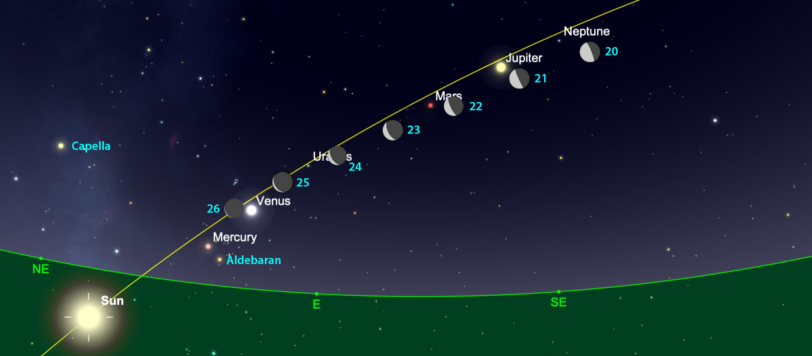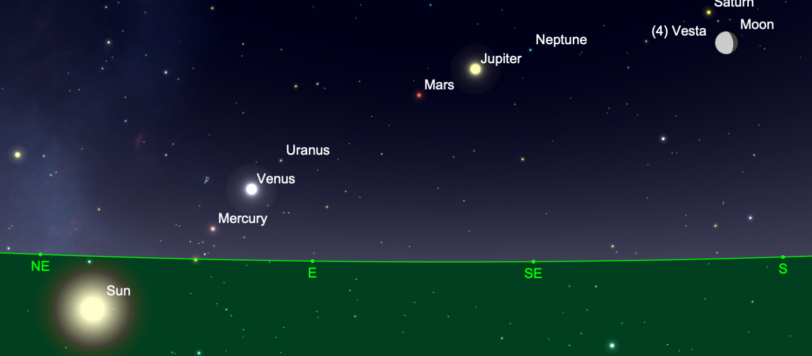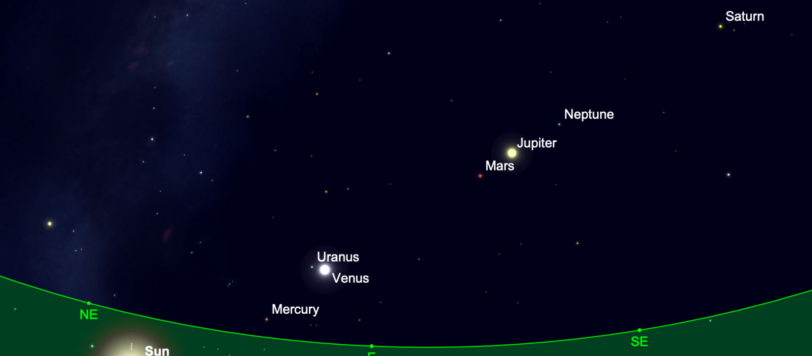First, meteors. The Delta Aquarid meteors continue from July. A huge number of meteors fall in this shower but they’re spread over several weeks so the number per hour is only around a dozen. They radiate from the constellation Aquarius in the south in the morning. By far the most popular shower of the year […]









